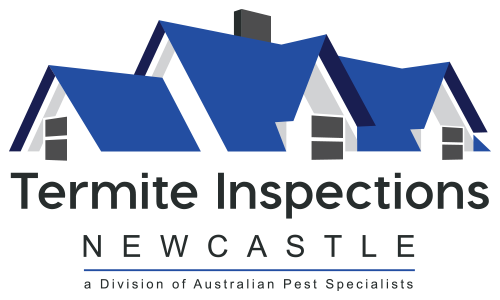The Australian Standard AS 3660.2-2000 and AS 4349.3 recommends that inspections be carried out at intervals no greater than annually and where conditions are conducive to termites this should be increased to a six monthly basis.
Did You know that Termite damage and costly repairs is NOT covered by Household home and contents insurance, so all treatments and all repairs have be paid by you and some repairs can be thousands of dollars.
Termites can pass through a 2mm crack in concrete, they can even eat through the rubber compound that abuts and separates concrete slab sections.
Termites can travel under flooring including ceramic tiles, parquet flooring and carpet in order to find a timber food source including your walling timbers.
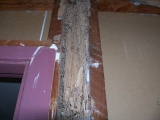
Termite damage hidden behind wall linings in a brick home
Subterranean termites cause more damage to homes than fires, floods, storms and tempest combined.
Most homes are at risk with one in every three homes suffering termite damage in Australia , you are at a higher risk if you are within 100m radius of well established trees especially the much love Australian Gum Trees.
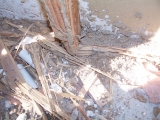
This is damage caused by termites that accessed the home via a concrete slab crack
It doesn’t matter if your home is made from Hardwood or Softwood, new or old all homes are affected by termites. Although it must be noted that termites do prefer sapwood to heartwood. But like us they will eat what ever is there when they are hungry enough.
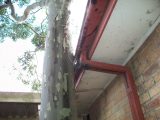
This home in Maryland NSW 2287 has suffered extensive termite damage please note the close proximity of the gum tree to the home .
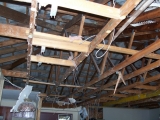
This was a brick home affected by termites in Bolton Point NSW 2283 ,the owners had to remove all wall linings and ceiling plaster in order to repair the termite damage .
A thorough termite inspection is considered essential on all homes every year .
Termites travel through mud tubes this aids in their undetected entry into your property , it also enables them to maintain a optimum environment within the tubes i.e. high humidity and moisture.
Termites need to feed on cellulose this causes considerable damage to homes and other structures. They eat cellulose,starches and sugars (carbohydrates) obtained from wood .
Termites obtain their protein from fungi that grow in and on the surface of wood,usually in most soil situations.
Termites will consume wooden floors, support beams, foundations, furniture, books and many other materials found inside.
As a species, termites swarm and are known to sacrifice themselves for the benefit of their colonies.
Soldier termites are equipped with enlarged mandibles(mouth parts), which they use to defend their colonies against enemies such as ants and other termite colonies.
Worker termites are pale in colour and are blind.
Subterranean termites nest underground, while dry wood termites establish their colonies within the wood on which they feed.
Termites are one of the rare insect species that live in colonies consisting of an equal number of males and females.
There are at least 1,900 species of termites are known to exist on earth. Although termites are a serious threat to wooden structures such as our homes, termites are also beneficial.
Their ability to digest cellulose allows these insects to help recycle the nutrient base of the planet, the real problem is that we have built our society and our homes on the termites homes, in essence termites have been inhabitants of the earth for well over 250 Million years doing their job recycling trees dead and alive and cellulose based products.
We wonder why they are so destructive but we forget that they are only doing their jobs as nature intended , if we want to co exist with termites it is essential that we build our homes away from large trees and possible termite food, keep our homes free from conducive issues like storing firewood on the ground, leaking pipes etc and have our homes regularly inspected.
Natural enemies
The most important natural enemies of termites are predators of various kinds, especially ants.Often ants will be found in old unused termite leads.
Winged reproductive s emerging on their colonizing flight are eaten in large numbers by lizards, snakes, frogs, insectivorous and omnivorous birds, ants and other predatory insects, especially dragonflies.
Workers and soldiers of a wide range of species form an important part of the diet of the echidna.
Kookaburras are often witnessed using their beaks to break into arboreal nest of the nasutitermes Spp as they find their flavour irresistible
